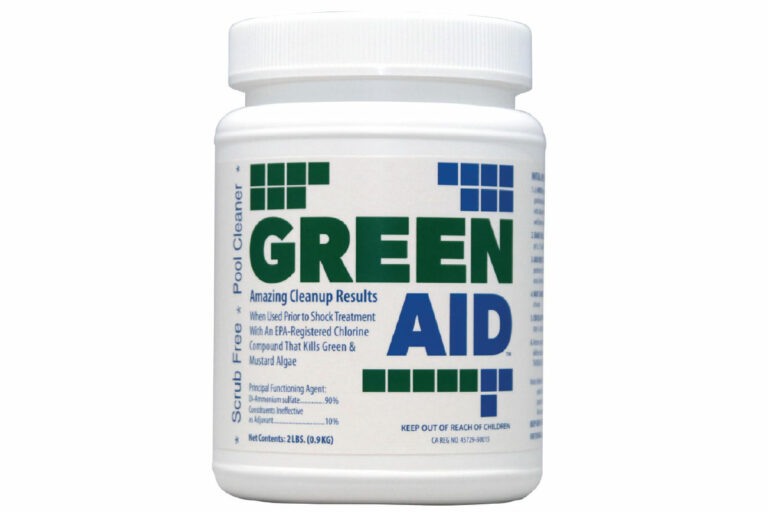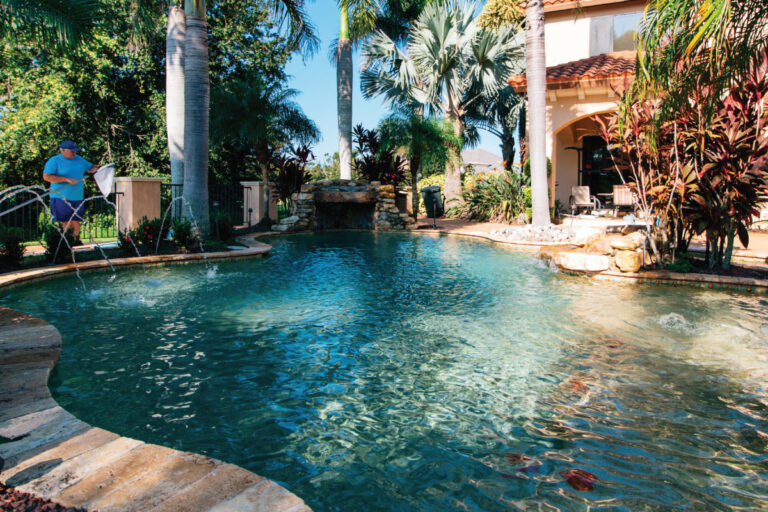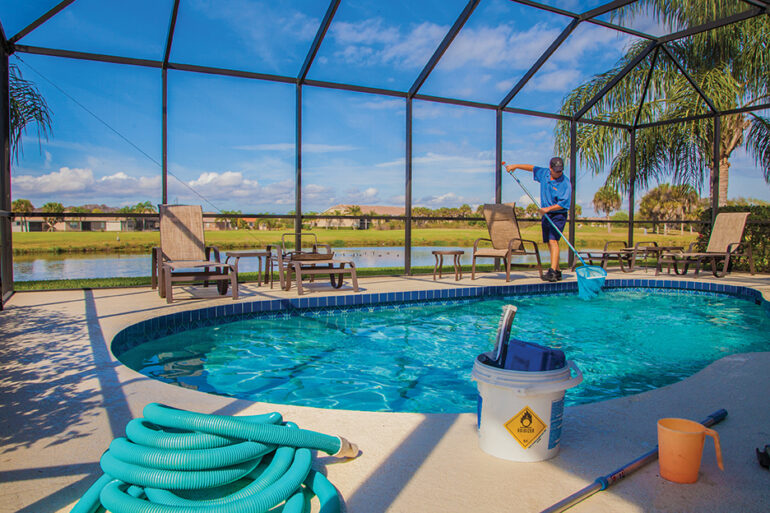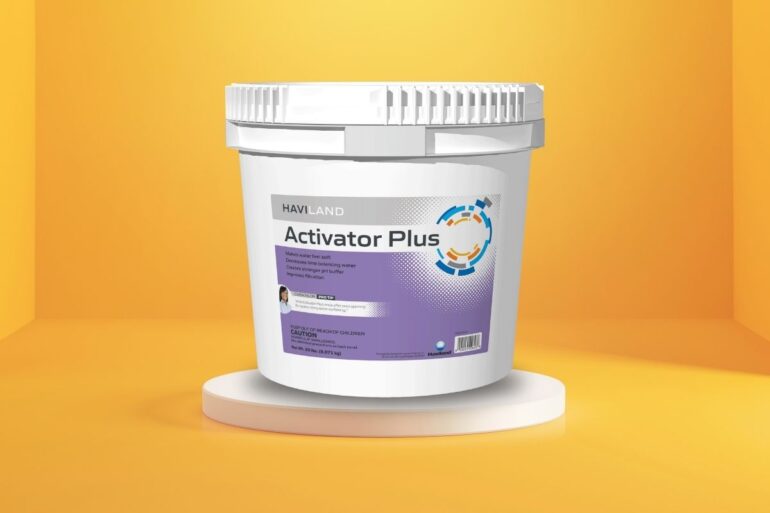Stubborn Algae?
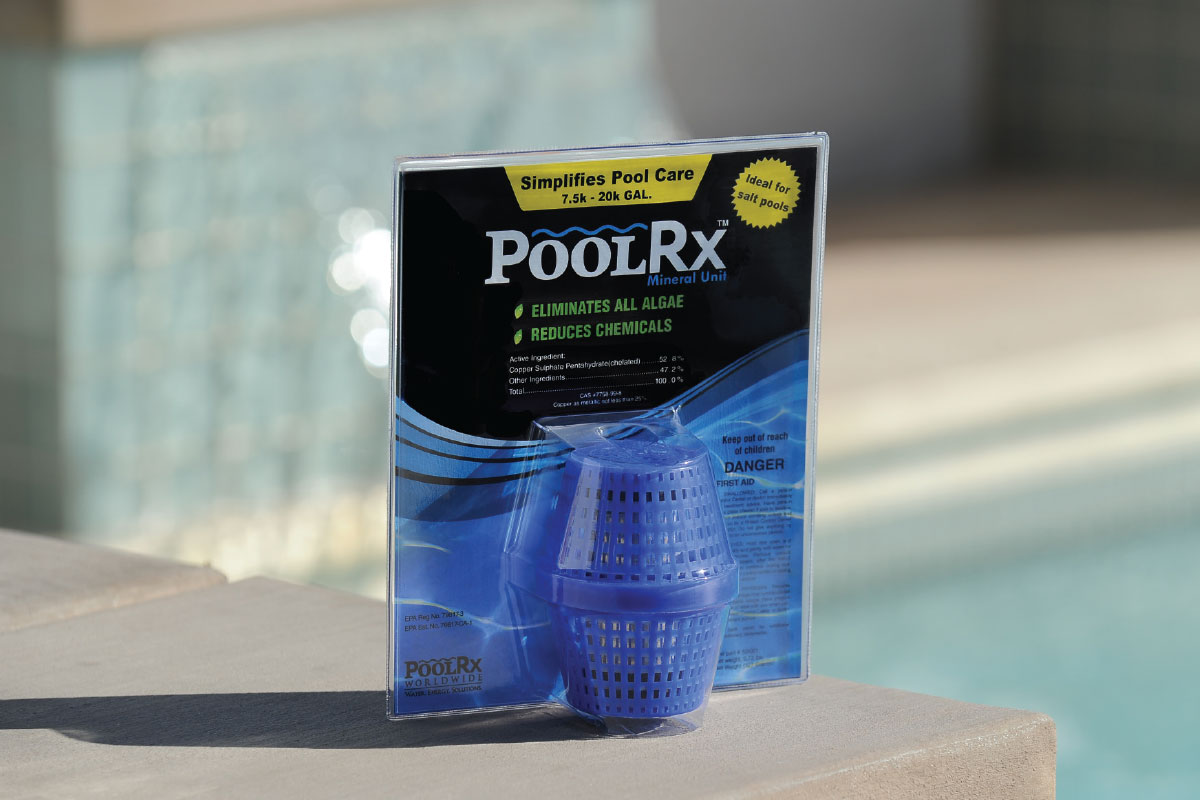
Deborah Martin, owner of The Pool Medic in central California, tried PoolRx as a last resort. She had struggled to keep a pool algae-free in summer 2015. It was a brand new, 45,000-gallon, full sun, black bottom Pebble Tec pool. “I get it stabilized, running the thing for like 18 hours a day and it’s not clearing up — it’s green,” Martin says. “There was an issue with the filter, it was defective from the get-go, [but even after it was fixed] I was still having this green issue and this algae blooming. My chlorine was at 1.5 to two ppm. I tested everything possible.”
When the next pool season rolled around, Martin decided enough was enough. “I’m going to throw PoolRx in it,” she says. “I don’t know what else to do — what do I have to lose? If it doesn’t work, I’ll pay for the product.”
But it did work. “I would get there in the summer, and they would have no chlorine in the water, and not a stitch of algae in that pool,” Martin says. Now she tries to put PoolRx on all of her high-use pools to help prevent algae and keep the chlorine level lower.
PoolRx is an EPA registered algaecide and chemical reducer. It’s placed in the skimmer or pump basket and lasts for six months. “After three hours in the pool, all the minerals dissolve out of the unit,” says Fred Schweer, vice president of sales at PoolRx. “The minerals form a stable residual throughout the entire body of water and eliminate any existing algae in the pool and prevent algae from growing.”
When the chelated minerals dissolve and form the residual the minerals also free up more chlorine to be available in the water, so you can use less. As the water passes over the specially treated alloy cylinder, there’s a reaction with the minerals in the water and the alloy, which keeps the minerals effected longer.
The minerals do eventually get used up and filtered out. At about six-months, users can pour in additional PoolRx Booster Minerals, if necessary. The alloy cylinder inside the unit is effective in rejuvenating minerals for up to one year. Start with a new unit at the beginning of each season.
“The minerals do get used up from killing algae, back-washing, splash out and filter cleanings,” Schweer says. “Eventually you’ll notice your chlorine demands are going back up because the micro algae is able to grow again. Or if you notice cloudy water, you know it’s time to add Booster Minerals.”
PoolRx comes in two sizes: one for 20,000 to 30,000 gallons and one for 7,500 to 20,000 gallons. Any pool more than 30,000 gallons can still use PoolRx with the booster to supplement the extra capacity. At distribution, the cost is typically around $50 for the smaller unit and $65 for the larger. The booster is $25. Professionals can buy four-packs, which provide the lowest cost per unit.
The upfront cost may be more than a $20 bottle of algaecide, but Martin says that over the season you end up saving money. “Every time you put an algaecide into a pool, you’re spending $6 or $7 every other week,” Martin says. “Now you have to have an extra product on your truck, if you charge for it you have to type that into your invoice. How much time is it going to cost you to carry around a quart of algaecide?”
Schweer says you should end up saving on chlorine, phosphates removers and repeat trips. “If you’re a service guy and you clean a customers pool on a Friday and they have a pool party over the weekend, by Monday the pool is cloudy, and by Tuesday the customer is calling saying, ‘My pool is turning green,’ or ‘I see some mustard algae, please come back.’ ” he says. “With PoolRx your chlorine lasts longer and even with zero chlorine for several days, yes, you will eventually get cloudy, but you won’t get algae, so you’re not going to have to take that call.”
Ken Post, owner of California Dreaming Pools in San Diego, also tried PoolRx on some of his problem pools with good results. “It’s that extra help you need,” Post says. “You’re only there once a week to correct the problem, you don’t see how many people are in the pool when you’re gone.”
If Post sees the same issues a couple weeks in a row, that’s when he pitches PoolRx. “I tell my client, ‘Look, I can tell this pool is getting a lot of use in between visits,’ ” Post says. “ ‘I don’t want to put in a ridiculous amount of sanitizer, let’s do this $75 to $100 solution. The pool looks beautiful, you’re happy, I’m happy.’ I hate it when a pool looks crappy, it’s a reflection on me.” He’d eventually like to have it on all of his pools, not just the problems. “That’s why [pool pros] love it,” Schweer says. “They’re buying this from distribution, they’re selling it to their customer and then they’re getting the benefits from it behind the scenes of no repeat stops, less chemical demand and really crystal-clear water.”

